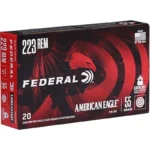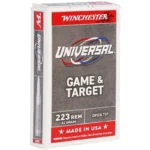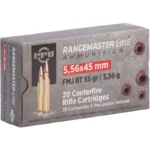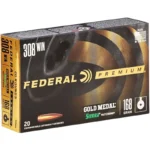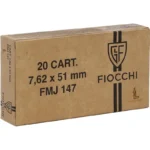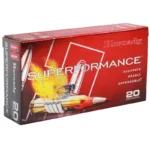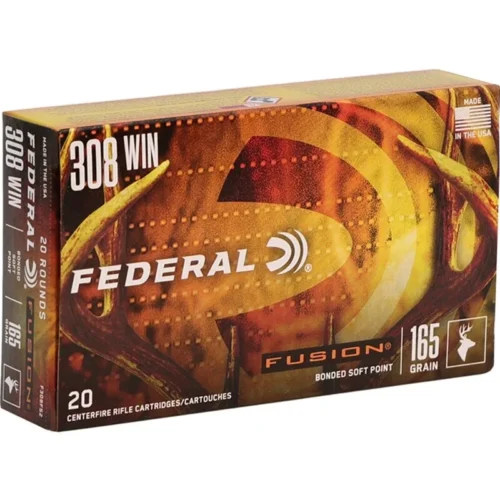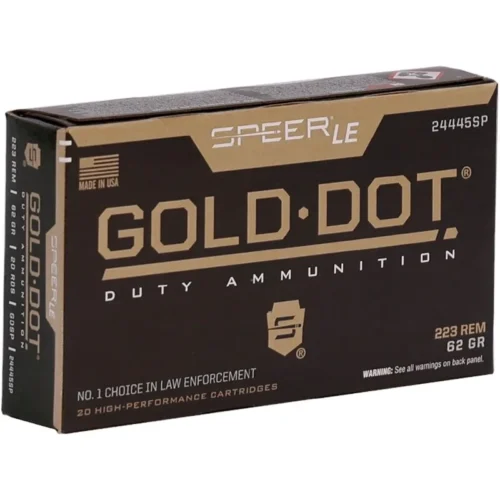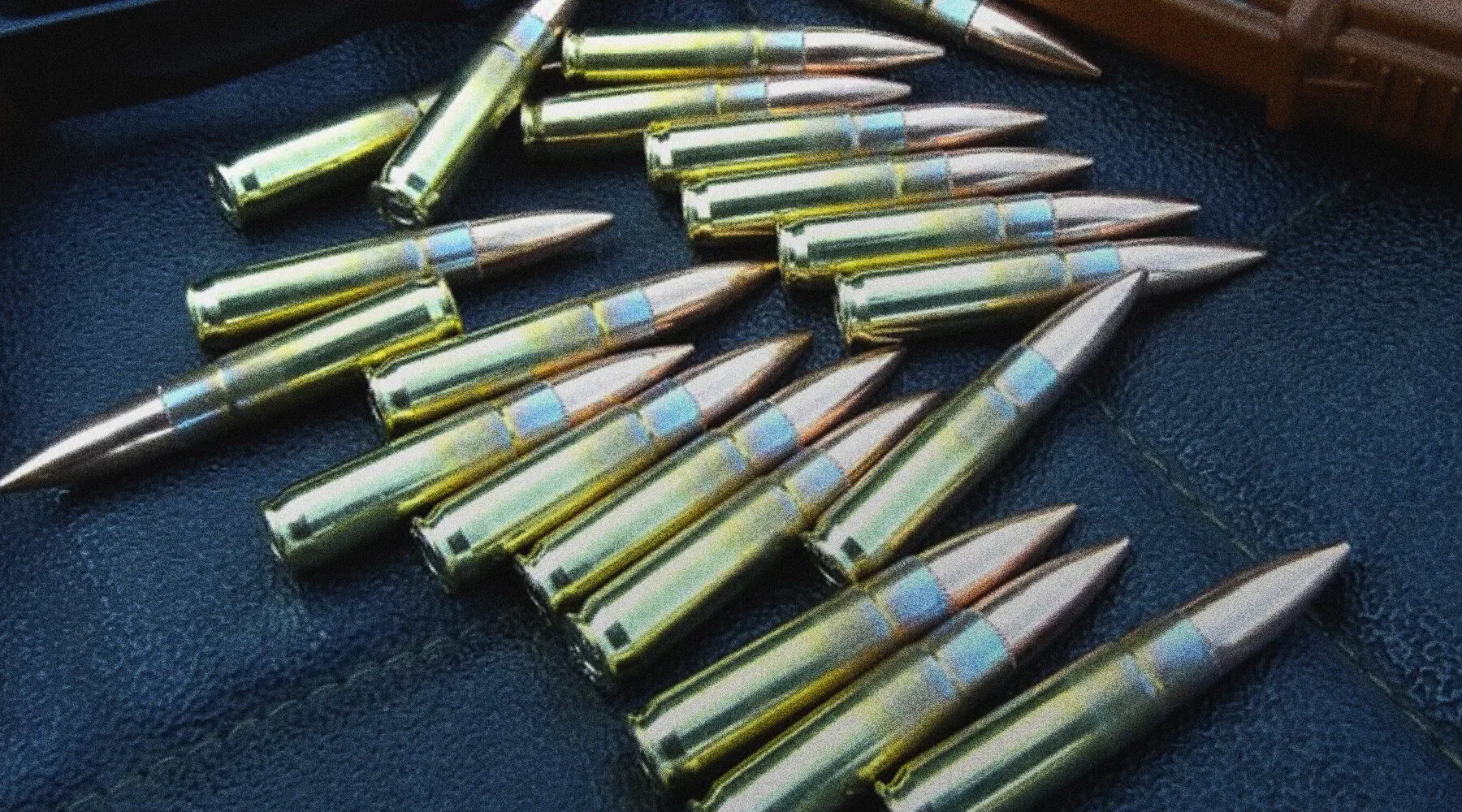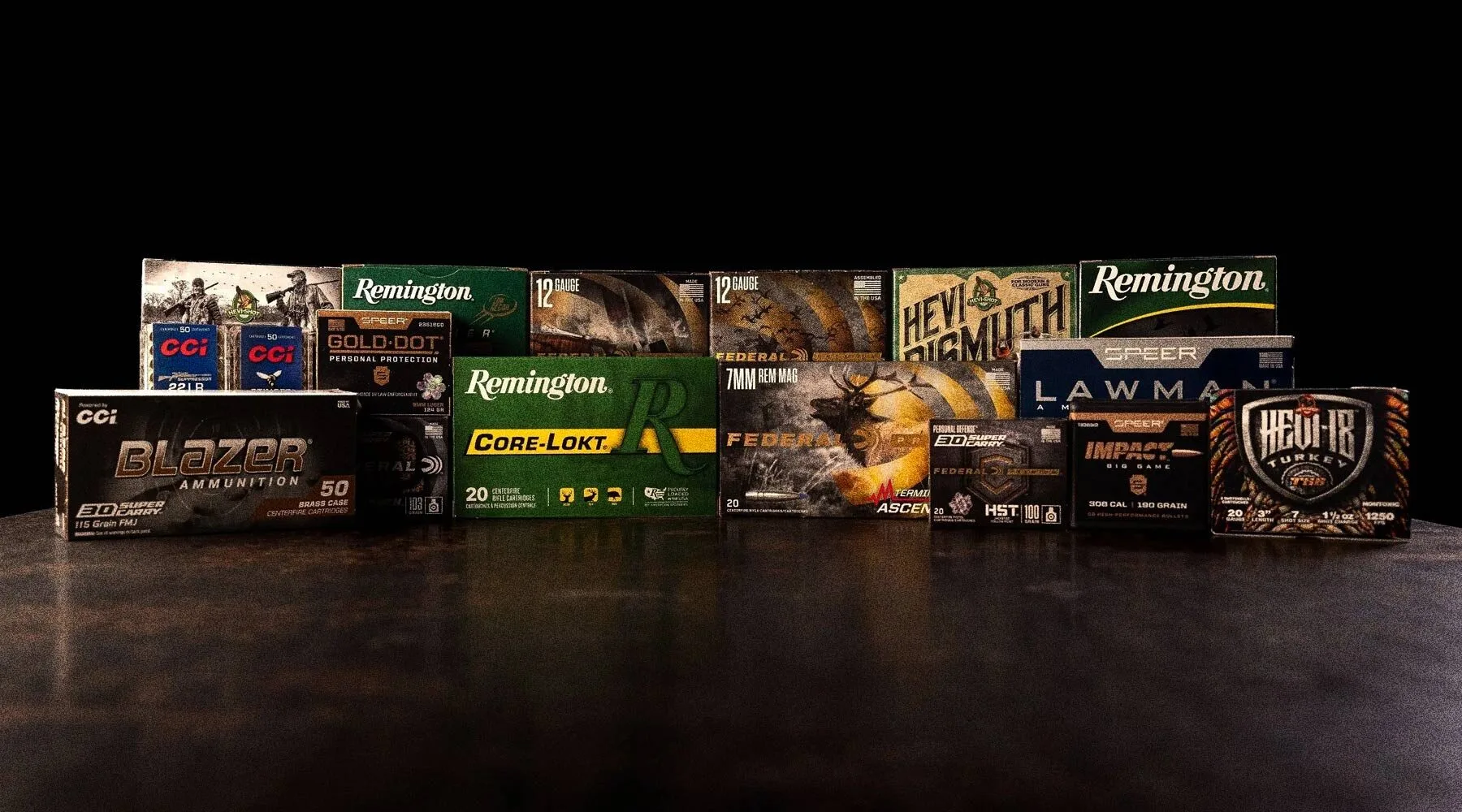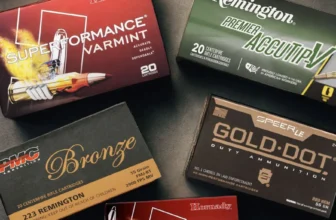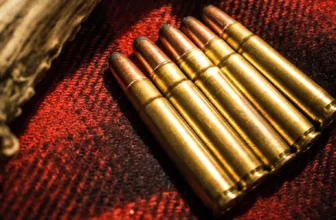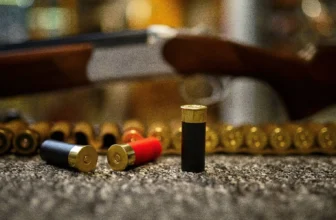TL;DR
.223 Rem/5.56 NATO is light, fast, low-recoil, and ideal for high-volume training, varmints, and defensive carbines; .308 Win/7.62 NATO hits harder, bucks wind better, and is the go-to for medium-to-large game and longer-range work. If you prioritize speed and capacity, go .223; if you need range and stopping power, go .308.
Important Nomenclature Note (Read This!)
- .223 vs 5.56 : Generally safe to fire .223 in 5.56 chambers. Generally not safe to fire 5.56 in .223 chambers because of higher pressure.
- .308 vs 7.62: Shooting 7.62 in a .308 chamber is generally acceptable. Firing hot .308 in a 7.62 chamber can be less ideal depending on headspace and rifle condition.
Fast Facts: .223 vs .308
Here’s the quick side-by-side for the two giants of American rifle shooting. The .223 ballistics table and the .308 Win ballistics table; down below line up the key specs so you can compare bullet size, case capacity, pressure, and more at a glance. These numbers show why each round has its own place, whether for lighter rifles or bigger game.
.223 Remington vs .308 Winchester
| Category | .223 Remington (5.56 NATO analog) | .308 Winchester (7.62 NATO analog) |
|---|---|---|
| Year Introduced | 1964 (SAAMI) | 1952 (SAAMI) |
| Bullet Diameter | 0.224 in | 0.308 in |
| Case Length | 1.760 in | 2.015 in |
| Overall Length (Max) | 2.260 in | 2.800 in |
| Base / Rim Diameter | ~0.376 / 0.378 in | ~0.470 / 0.473 in |
| Case Capacity (H2O) | ~28.8 gr | ~56 gr |
| Max Pressure (SAAMI) | 55,000 psi | 62,000 psi |
| Common Bullet Weights | 40–77 gr (55, 62, 69, 75–77 common) | 120–180 gr (150, 165, 168, 175–180 common) |
| Primer Type | Small Rifle | Large Rifle |
| Case Type | Rimless, bottleneck | Rimless, bottleneck |
| Typical Uses | Varmints, training/plinking, 3-Gun competition, home defense, patrol carbines | Deer/elk/bear hunting, DMR/sniper, precision rifles, battle rifles |
| Recoil (Typical) | ~3–5 ft-lbs (7–8 lb rifle) | ~15–22 ft-lbs (8–9 lb rifle) |

What it means for you:
- Capacity and Pressure: The .308’s larger case lets it drive heavier bullets with more energy, making it effective past 500 yards and on bigger game.
- Compatibility: As we stated with .223 vs 5.56, chamber differences matter. Always check your barrel markings and use the correct ammo to avoid unsafe pressures.
- Applications: The .223 is well-suited for varmints, predators, training, and defense. The .308 excels for deer, elk, bear, and long-range hunting or precision shooting.
Performance Comparison (Common Loads)
Here are some well-known factory loads from popular brands in .223 Remington and .308 Winchester. Looking at these examples gives us a sense of the types of products shooters commonly use and the roles they’re built for.
.223 Rem / 5.56 NATO
Federal American Eagle 223 Remington Ammunition 55 Grain Full Metal Jacket – AE223NX1 Best price
Winchester Universal 223 Remington Ammunition 62 Grain Full Metal Jacket – U223HP62 Target Shooting Ammo
Prvi Partizan Rangemaster 5.56mm NATO M193 Ammunition 55 Grain Full Metal Jacket Boat Tail – PPRM5561 Training ammo
.308 Win / 7.62 NATO
Federal Gold Medal 308 Winchester Ammunition 168 Grain Sierra MatchKing Hollow Point – GM308M Target Shooting Ammo
Fiocchi Range Dynamics 7.62 x 51 mm Ammunition 147 Grain Full Metal Jacket – 762×51 Best Price
Hornady Superformance 308 Winchester Ammunition 150 Grain SST – 80933 308 Hunting Ammo
.223 Remington loads tend to focus on lighter bullets and high velocity, making them great for target shooting, training, and smaller game. .308 Winchester loads, on the other hand, emphasize heavier bullets and higher energy, giving them an edge for hunting bigger game and long-range shooting.
Ballistic Performance: From Trajectory to Terminal Effects
When comparing .223 Remington and .308 Winchester, the story starts with trajectory, continues with ballistic efficiency, and ends with what happens on target.
Trajectory & Bullet Drop
With a 200-yard zero, lighter .223 loads shoot fast and flat, often dropping less than .308 at 300 yards. Past 400–500 yards, .308’s heavier bullets begin to show their advantage, holding velocity longer and resisting wind drift more effectively.
| Range | .223 Rem 55-gr FMJ | .223 Rem 69-gr OTM | .308 Win 168-gr OTM |
|---|---|---|---|
| 100 yds | +1.5″ | +1.7″ | +1.9″ |
| 300 yds | −6.5″ to −7″ | −6″ | −8″ to −9″ |
| 400 yds | −18″ to −20″ | −17″ to −18″ | −21″ to −22″ |
Ballistic Coefficient (BC) & Sectional Density (SD)
Heavier, longer bullets tend to carry higher BCs (aerodynamics) and SDs (penetration). Here are the provided examples:
| Bullet Example | BC (G1) | SD |
|---|---|---|
| .223 Rem 55-gr FMJ | ~0.243 | ~0.157 |
| .223 Rem 69-gr OTM | ~0.301 | ~0.196 |
| .308 Win 168-gr OTM | ~0.462 | ~0.253 |
Stopping Power & Terminal Behavior
.223 excels with rapid-expanding or fragmenting bullets, making it effective for varmints, coyotes, and defensive use. .308 carries far more energy and penetration, which makes it the go-to choice for deer, hogs, elk, and barrier-blind duty roles.
| Category | .223 Rem | .308 Win |
|---|---|---|
| Muzzle Energy | ~1,200–1,350 ft-lbs | ~2,400–2,800 ft-lbs |
| Game / Use | Varmints, coyotes, light deer, defense | Deer, hogs, elk, precision/duty roles |
| Barrier Penetration | Limited | Strong |
Key Takeaway
.223 is light, flat, and effective within moderate ranges, while .308 offers more reach, stability, and stopping power for bigger game and extended distances.
Recoil & Shootability
When comparing these two rounds, the kick you feel behind the trigger can be just as important as raw ballistics. Recoil plays a big role in how fast you can get back on target and how enjoyable it is to keep shooting over time.
- .223 Rem: Very light recoil. This makes it easier to stay on target, fire quick follow-up shots, and train new shooters without developing flinch. You can shoot it for extended sessions without much fatigue, and a muzzle device helps smooth it out even more.
- .308 Win: Noticeably stronger recoil. It isn’t unmanageable, but it slows your shooting rhythm and can cause fatigue during long strings. A good recoil pad or muzzle brake helps a lot.
Practical Applications: Which Caliber For Which Job?
Home Defense
Winner: .223 Rem
Light recoil, quick handling, and expanding or fragmenting loads give reliable performance with generally less risk of over-penetration than .308. Always remember that drywall is not cover.
Patrol Carbine / Duty Use
Tie
In urban or suburban settings, .223 shines with modern bonded or copper loads. In rural or perimeter roles where barriers and vehicles are factors, .308 can be the stronger option.
Training and Plinking
Winner: .223 Rem
Lower cost and softer recoil make it ideal for high-volume shooting and fundamentals.
Competition
Split Decision
Three-Gun favors .223 for speed and magazine capacity. Precision rifle matches still see .308 used in tactical divisions, though heavy .223 loads can compete at mid-range.
Varmints and Predators (coyotes, prairie dogs, fox)
Winner: .223 Rem
Flat shooting at moderate ranges with varmint bullets and lighter rifles for field carry.
Deer, Antelope, Hogs
Winner: .308 Win
.223 can work with the right bullet and careful shot placement, but .308 provides more energy and margin for error.
Elk, Moose, Black Bear
Winner: .308 Win
With the right bullets, .308 has the penetration and energy needed for larger animals at ethical distances.
New Shooters
Winner: .223 Rem
Low recoil and easy handling make it beginner friendly.
Extended Range (600–1,000 yards)
Winner: .308 Win
Heavier bullets with higher ballistic coefficients resist wind drift and remain supersonic longer, giving it the edge past mid-range.

Brief History (Because It’s Cool)
- .308 Winchester / 7.62×51 NATO
- After World War II, the U.S. military was looking for a new rifle round to replace the long and heavy .30-06. The goal was to create a cartridge with similar power but in a more compact case, better suited for the new generation of automatic rifles. While the military was still testing its new design, Winchester jumped ahead and released its commercial version, the .308 Winchester, in 1952. Two years later, NATO officially adopted the military version as the 7.62x51mm NATO, making it the new standard.
- .223 Remington / 5.56×45 NATO
- In the late 1950s, the military shifted toward lighter and higher-velocity rounds so troops could carry more ammunition. Eugene Stoner scaled down his AR-10 into the AR-15 to work with the new .223 Remington. The M16 rifle followed in the 1960s, chambered for 5.56×45 NATO. Early reliability issues in Vietnam came from powder changes, unlined chambers, and a lack of issued cleaning kits. Once corrected, the 5.56 allowed soldiers to carry more rounds, fire faster with less recoil, and maintain effectiveness in jungle combat where volume of fire often mattered more than individual shot power. The shift to 5.56 shaped modern infantry tactics and cemented the AR platform as a battlefield standard.
Hunting Notes & Legalities
- Many states allow .223 for deer; some mandate minimum calibers (.243 or similar) for big game. Always check your state regs.
- Bullets matter more than headstamps: A bonded 62–77-gr .223 can humanely take deer with good placement; a 150 –165-gr .308 soft point is far more forgiving.
- For bears and heavy-boned game, .308 with controlled-expansion bullets is the sensible baseline; some hunters prefer stepping up to more powerful cartridges.
Federal Fusion 308 Winchester Ammunition 165 Grain Bonded Soft Point – F308FS2
Reloading Corner
- Component availability: Excellent for both. You’ll find piles of brass, boatloads of bullets from 40–77 gr for .223 and 120–200+ gr for .308, and powders that meter well for both.
- Primers: .223 uses Small Rifle (SR), .308 uses Large Rifle (LR). If you chase military crimped primers in surplus brass, swage or ream those pockets.
- Twist rates:
- .223: 1:12 was for 55-gr; modern 1:9 stabilizes up to ~69–73-gr; 1:7–1:8 handles 75–77-gr OTMs and long copper bullets.
- .308: 1:12 is common and stabilizes 150–175-gr; 1:10 is a versatile all-rounder for 150–190-gr.
Home Defense Reality Check
- Both .223 and .308 will penetrate interior walls. Selecting the right bullet (e.g., lightweight fragmenting or controlled-expansion .223) and knowing your backdrop are critical.
- In close quarters, .223’s lower recoil, blast, and overpenetration risk relative to .308 make it the more practical choice for most homes.
- Suppressors and low-flash powders help in confined spaces; a quality white light and a reliable optic are just as important as caliber choice.
Speer Gold Dot 223 Remington Ammunition 62 Grain Soft Point – 24445SP
FAQs
- Can I shoot 5.56 NATO in a .223 Rem rifle?
- Not recommended. 5.56 runs hotter and has different throat geometry. Use .223 in .223 chambers; use both in 5.56 chambers.
- Can I shoot 7.62 NATO in a .308 Win rifle?
- Generally acceptable. The reverse (.308 in a 7.62 chamber) can be less ideal depending on headspace and specific rifle. When in doubt, follow the rifle manufacturer’s guidance.
- Is .223 enough for home defense?
- With the right load, yes. It offers effective terminal performance with less recoil and typically less risk of excessive penetration than .308. Shot placement and ammo choice matter.
- Why does .308 cost more than .223?
- More material per round, heavier bullets, often lower production volume than 5.56/.223. Market demand swings also play a role.
- Is .223 good for deer?
- Where legal and with premium bullets (bonded or copper), yes. With thoughtful shot placement. But .308 is more forgiving on angles, bone, and marginal hits.
- What about recoil for beginners?
- .223 is ideal for new shooters. You’ll build fundamentals faster and have more fun.
- Which is better for 800–1,000 yards?
- .308. It carries more energy, stays supersonic longer, and handles wind better. Heavy .223 can get there, but it’s less forgiving.
Buying Tips & Bulk Ammo Considerations
- Cost and availability
- .223/5.56: The volume king. Broadest selection, especially for bulk training. Brass-cased training ammo is often the sweet spot for value and reloadability. Premium defensive/hunting loads are widely available.
- .308/7.62: Still plentiful with tons of hunting, match, and surplus-style options. Match/precision loads and big-game bullets cost more, but you get performance where it counts.
- Barrel length vs ammo choice
- Short barrels shed speed. For short .223 barrels, consider loads designed for SBR velocities to ensure expansion. For .308 carbines, pick loads that perform at reduced velocities or accept a shorter effective range.
- Bulk buys at Target Sports USA
- If you shoot a lot (and with .223, you will), case quantities save real money. We carry top brands in both calibers; from brass-cased range loads to premium bonded and match offerings. Watch for free shipping deals and member pricing on bulk ammo.
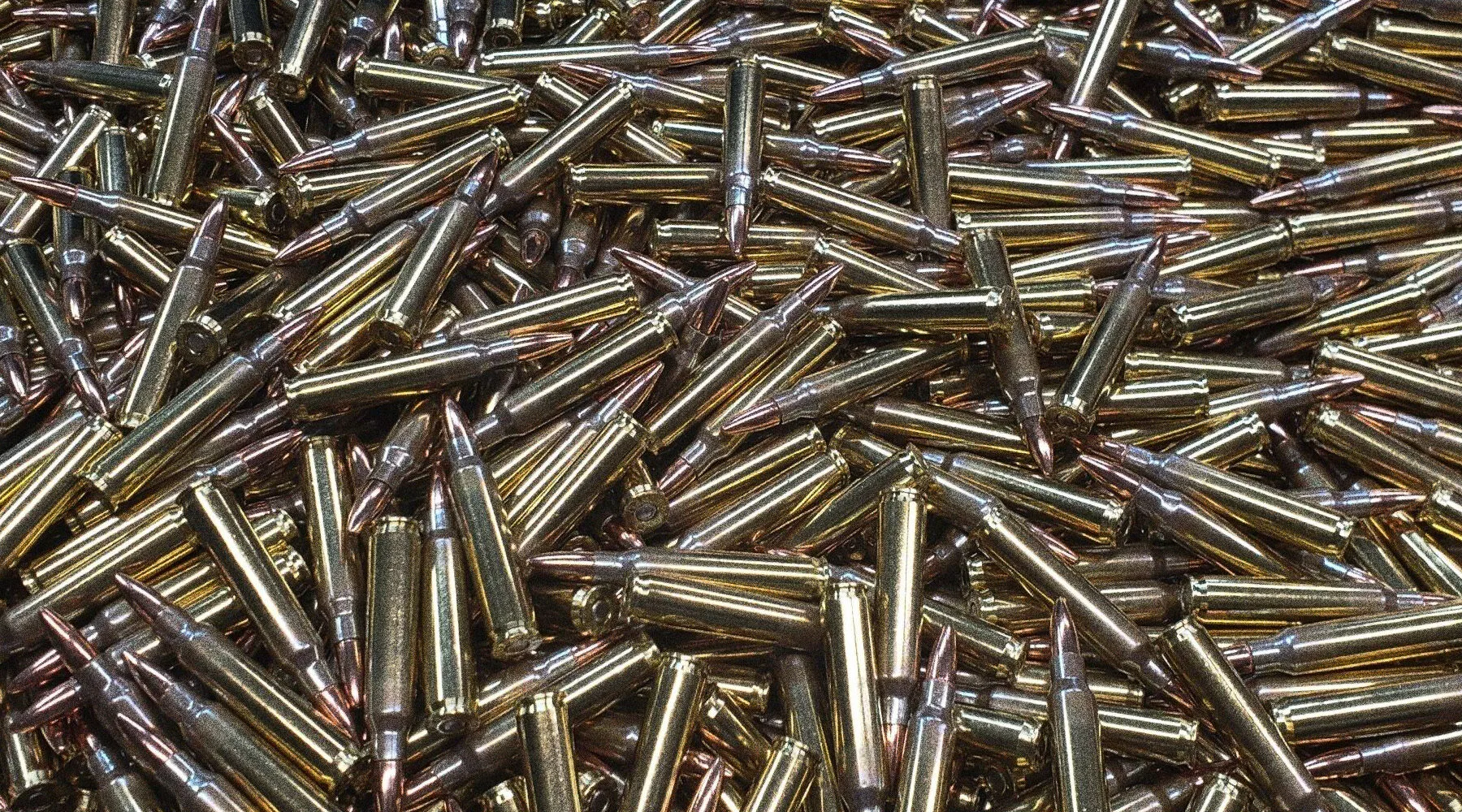
Final Verdict and Buying Advice
- Go .223 Rem/5.56 NATO if:
- You prioritize low recoil, high capacity, and high-volume training.
- Your main focus is home defense, carbine classes, or varmint/predator control.
- You want the most affordable path to trigger time and skill-building.
- Go .308 Win/7.62 NATO if:
- You hunt deer-sized game and up, or you want a do-it-all North American hunting rifle.
- You shoot at extended ranges where wind and energy matter.
- You need barrier performance and deeper penetration with appropriate bullet construction.
The reality: Many shooters end up with both. An AR-15 in 5.56 for practice, defense, and varmints; a .308 bolt-action or AR-10/M1A for hunting and distance work. If you’re starting with one, choose based on your most common use case.
Safety and Final Notes
- Always match ammo to your chambering (.223 vs 5.56; .308 vs 7.62 NATO) and follow the firearm manufacturer’s guidance.
- Ballistics vary by barrel length, lot numbers, and environmental conditions, confirm with your rifle and chronograph when possible.
- Check local laws for hunting caliber restrictions and magazine capacities.
Ready to choose? Hit Target Sports USA for in-stock .223/5.56 and .308/7.62, bulk or single boxes; from Federal, Winchester, Hornady, PMC, Sellier & Bellot, Nosler, Barnes, and more. Build your plan, buy smart, and train often.
Gabriel Sousa is a marketing associate at Target Sports USA. Known for his content writing, editorial, and ammunition product catalog management skills.
